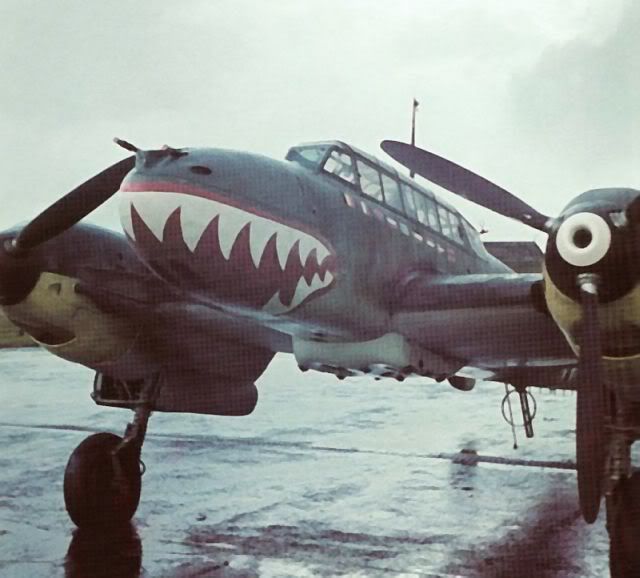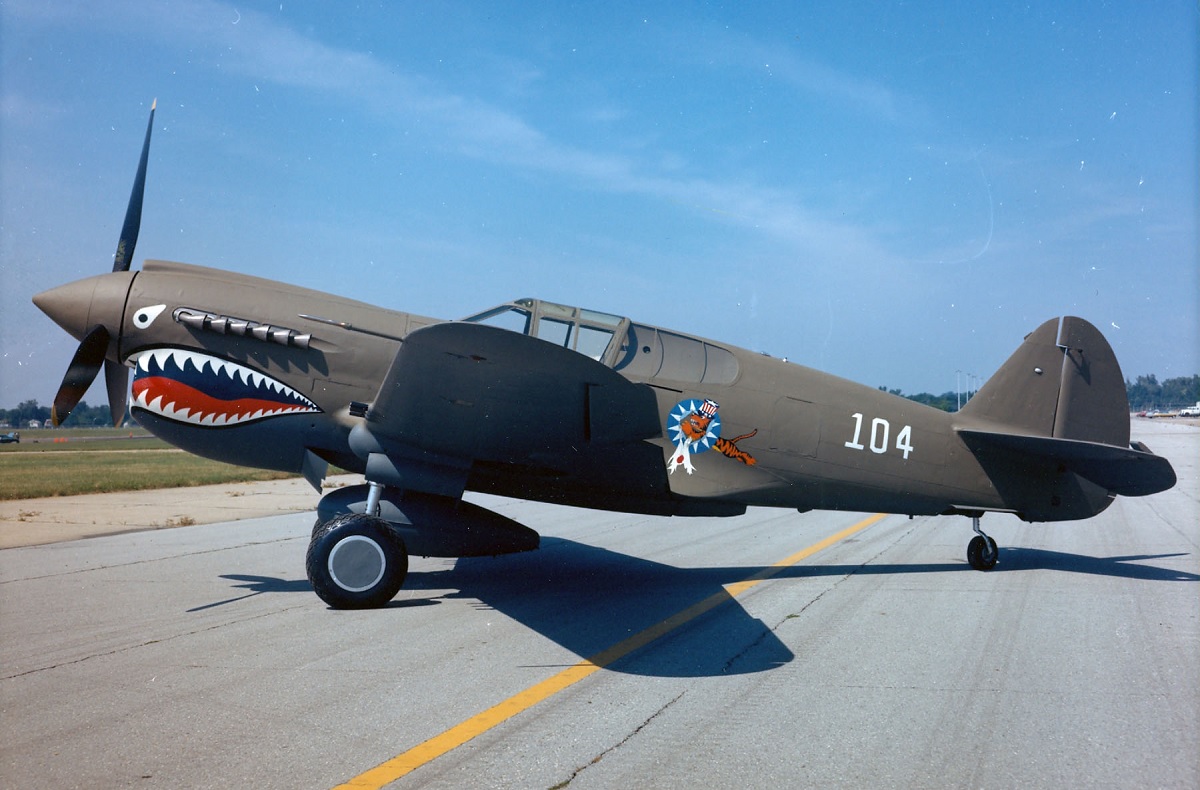Erik Shilling, a former Army Air Corps pilot, was ultimately responsible for designing the insignia that would become synonymous with the American Volunteer Group
Following their arrival three months prior to the start of the war, the Royal Air Force (RAF) Brewster Buffalos of 67 Squadron were solely in charge of defending Rangoon (the commercial and political center of British Burma). However, a few days prior to the Japanese attack, they were joined by a strange aerial unit that had been practicing all fall at Kyedaw Airdrome in the Burmese up-country. The 3rd Squadron of the American Volunteer Group (AVG or Flying Tigers) of the Republic of China Air Force was the group’s official name. The American pilots went under the nickname “The Hell’s Angels” informally.
All of the pilots had prior flying experience with the US Army Air Corps, US Navy, and US Marine Corps.
Once approved, the pilots discovered their leader was former Army Air Corps Major Claire A. Chennault, a fighter pilot’s fighter pilot who had been the foremost proponent of fighter aviation in the Air Corps, as recounted by Thomas McKelvey Cleaver in his book I Will Run Wild. The Republic of China’s Generalissimo Chiang Kai-Shek, who had been at war with Japan since 1932, took a position as an air advisor when he resigned from his commission in the late 1930s.
Early in 1941, Chennault persuaded Chiang—who in turn convinced Roosevelt—that a volunteer squadron of American pilots he had trained in what he deemed “proper tactics” could be able to alter the course of the war in China. The British released 100 Lend-Lease Curtiss H-87-A2 “Tomahawks” for transport to China, and in April, President Roosevelt signed an unnoticed executive order allowing the recruitment of enlisted personnel and reserve officers on duty with the US armed services.
The recruiting officers had to present contracts that were “legally consistent” with official US policy because US-Japanese relations were already in a delicate situation. The Central Aircraft Manufacturing Company (CAMCO), headed by Edward D. Pawley, was in charge of organizing the operation, which received the government’s informal approval. Edward D. Pawley was later praised by Life magazine for his ability “to be at the right place a few minutes before the right time.” The contracts the men signed simply said that they were engaged to “manufacture, repair, and operate aircraft” without mentioning the true nature of their work.
Three groups were initially designed: two fighter groups and one bomber group. The first group had Curtiss P-40 aircraft, the second would have Seversky P-43 aircraft, and the third would have Lockheed Hudson aircraft as a bomber group. The second and third groups had to be canceled due to the Japanese attack on Pearl Harbor.
Erik Shilling, a former Army Air Corps pilot, boarded the Dutch passenger ship Jagersfontein on July 7, 1941, together with 100 other pilots and 150 ground troops, for the voyage to the Far East. Shilling stated that soon after the ship set sail, he came to the conclusion that there was more going on than had been disclosed.

‘In fact, we were an official undercover operation of the American government. We were not mercenaries, though that cover story was so good everyone believed it afterward. We were escorted to the vicinity of Australia by two US Navy heavy cruisers, the USS Salt Lake City and the Northampton because there was a real fear the Japanese had heard about the operation and would attempt to intercept us.’
Shilling and the others were introduced to the P-40 and Claire Chennault’s strategies for fighting the Japanese after they arrived at Kyedaw, the training facility the British provided for the AVG north of Rangoon. Older approved of Chennault’s methods. ‘The P-40 was a heavier fighter than the others, and it could dive faster than anything else around at the time. Staying in the vertical plane, using dive and zoom tactics against an enemy whose best performance was in the horizontal plane, made perfect sense to me.’
Three squadrons—the “Adam and Eves” (1st Pursuit Squadron), “Pandas,” and “Hell’s Angels”—were formed during that fall’s training. Although there were no ranks, a military-style organizational structure was used, and “squadron leaders” and “flight leaders” were called after the more seasoned pilots. The emblem that would become inextricably identified with the AVG was ultimately created by Erik Shilling. After 40 years, he remembered:
‘It’s always been said that the tiger mouth came about after we saw a picture of a P-40 being flown by 112 Squadron of the RAF in North Africa. That’s not true. I was looking through a British magazine one day and saw a photo of a Me 110 with a shark face on it. They were the Haifisch Gruppe. I thought it looked perfect for our squadron insignia.’
Shilling painted a shark’s mouth on his P-40 because he thought it complemented the airplane’s sharp-nosed shape. The commander recognized it as the group marking when he requested Chennault for authorization to use it as a squadron marking. Before they were painted, Shilling decided to chalk the shark’s jaws onto every P-40 at Kyedaw. Because of this, no two of them had the same mouth. Only the “Hell’s Angels” airplanes had their machine guns bore-sighted when Chennault was notified of the potential for an impending war.
To finish equipping, the “Adam and Eves” and the “Pandas” went to Kunming, China. On December 3, 1941, the “Hell’s Angels” flew their aircraft to Mingaladon Airdrome, north of Rangoon. A few days later, on December 20, 1941, the Flying Tigers engaged in their first battle.
I will Run Wild is published by Osprey Publishing and is available to order here.
Photo by U.S. Air Force and Pinterest


